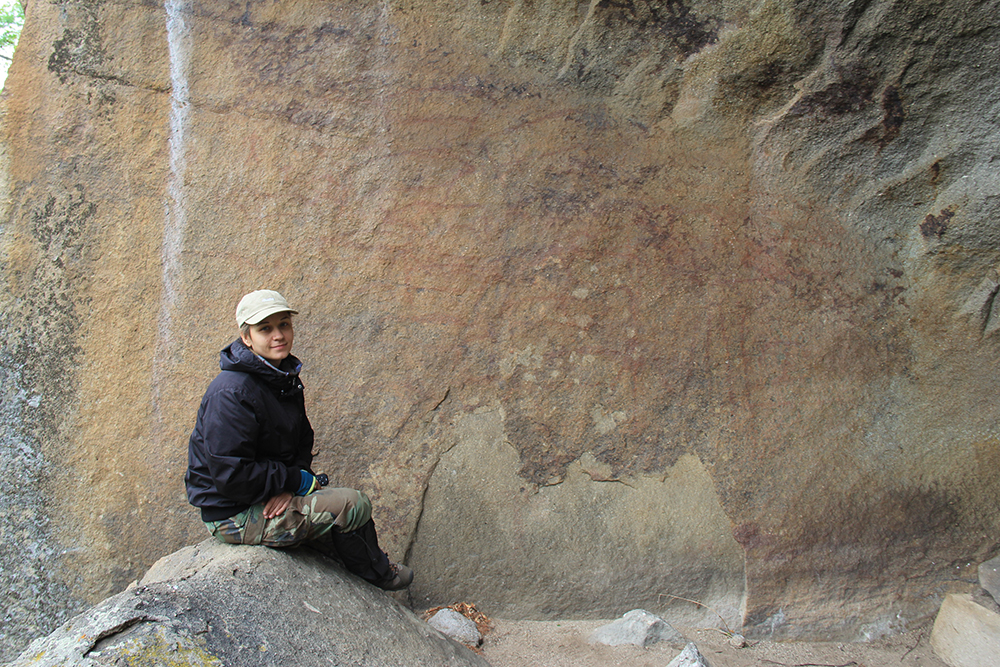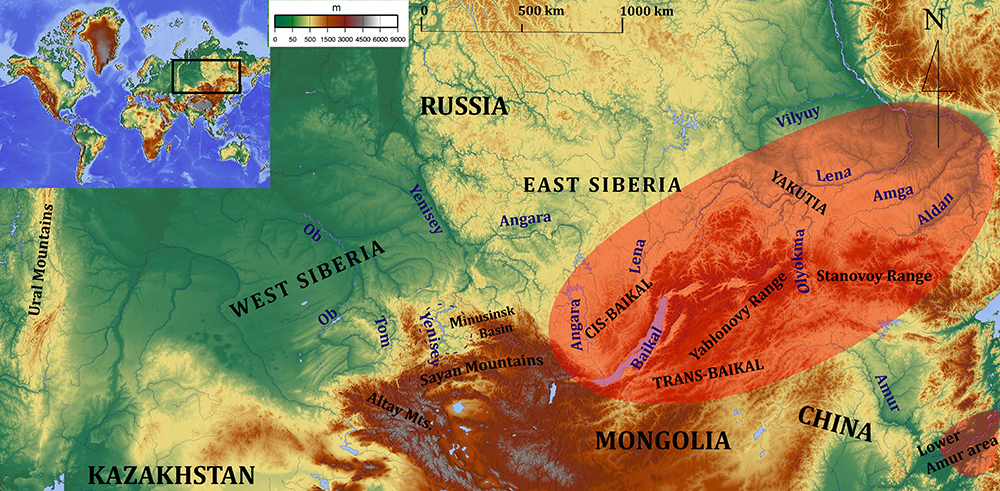
The largest study of South-East Siberian rock art since the 1980s reveals the complex web of human social and cultural connections drawn over thousands of years.

Irina Ponomareva, a PhD candidate from Griffith University's Place, Evolution and Rock Art Heritage Unit, recorded more than 6000 designs in 108 rock art sites in East Siberia - an area of scant research with black and white drawings and few low-quality black-and-white photographs.
Focusing on three chronological rock art groups - Paleolithic, Neolithic and Bronze Age, Irina examined several rock art styles and traditions from Baikal, Trans-Baikal, Yakutia and the Lower Amur regions.
"The most important observation made in this research addresses the questions of why rock art is created, why specific styles and traditions emerge and why changes in rock art occur,'' she said.
"Rock art sites create and maintain a strong connection between people, their past and their land. The emergence or change of rock art styles occurs in a situation of major cultural changes, the reasons and dynamics of which may vary.
"The important factor is that people had to protect their tradition, culture and wellbeing in a situation of threat to their ethno-cultural continuity."
"Rock art sites create and maintain a strong connection between people, their past and their land."
"It becomes highly important to mark rocks with symbols of now 'hot' identity thus expressing belonging. Those marks remain there for millennia continuing to structure identities of those who claim their belonging to these places afterward."
 During her fieldwork, Irina examined several sites presumably attributed to the Late Pleistocene-Early Holocene. 3D recording of the Shaman-Gora site allowed the production of a more accurate tracing showing a herd of extinct bison. A study of petroglyphs of the Lower Amur River were also found, giving a nuanced picture of rock art development from the Final Pleistocene-Early Holocene.
During her fieldwork, Irina examined several sites presumably attributed to the Late Pleistocene-Early Holocene. 3D recording of the Shaman-Gora site allowed the production of a more accurate tracing showing a herd of extinct bison. A study of petroglyphs of the Lower Amur River were also found, giving a nuanced picture of rock art development from the Final Pleistocene-Early Holocene.
"The chronology of this rock art revealed a continuity in the rock art tradition during the Early-Middle Holocene - implying a continuous ritualistic use of the space where rock art was placed,'' Irina said.
It's thought the Lower Amur basin was where rock art sites could have served as places for communication and interaction between communities. Face motifs could have been used as symbolic devices in building communities and establishing and maintaining their symbolic boundaries.
While the Amur rock art represents a case of ethno-cultural continuity across millennia, the Taiga Neolithic rock art tells a story of increased mobility and intensification of contacts. The rock art tradition emerged and then flourished during the Bronze Age and possibly well into the Iron Age.
"Therefore, rock art served as a means of communication about a people and their land not only between locals and newcomers but also between generations conveying the connection of past and present,'' Irina said.
"While rock art sites are still worshipped and play an important role in contemporary religious practices, the theme of the use and re-use of prehistoric rock art is a barely touched area of enquiry in Siberia. This is something I hope my research will help to change."
International rock art expert Professor Paul Taçon, Irina's PhD supervisor, added: "This landmark study is very timely and important given many of the rock art panels suffer from increasing acts of graffiti, other forms of vandalism and new natural threats associated with climate change.
"Soon the panel of extinct bison will be gone forever along with many other designs. Irina's research not only has given us the best interpretation of South-East Siberian rock art but also has produced a new and thorough digital record before it is lost".






